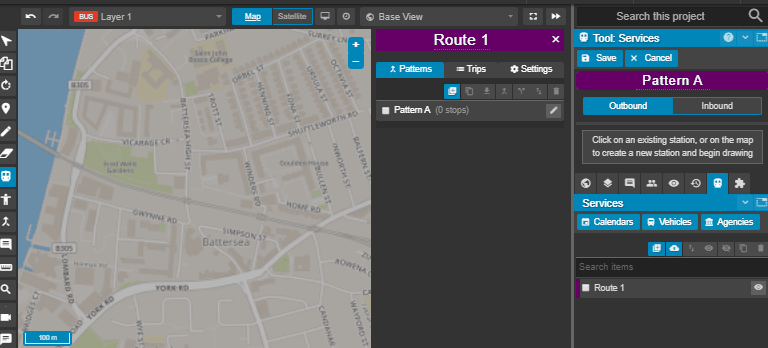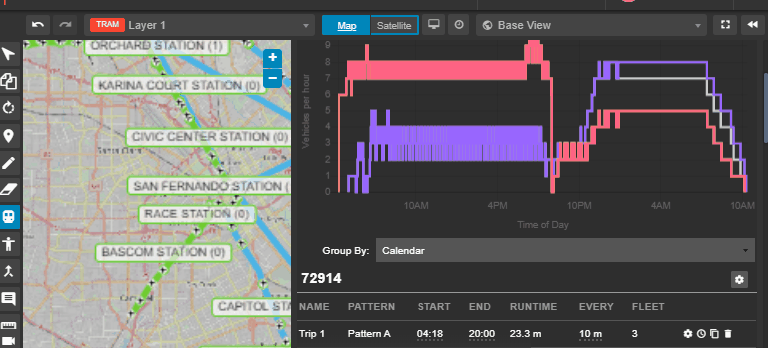Podaris' services tools allow you to plan scheduled services for traditional transit routes that follow predefined stopping patterns.
What are scheduled services?
Scheduled services tools are designed to help you plan timetabled routes for either fixed infrastructure or road-based systems.
For fixed infrastructure (e.g. rail, metro, prt or hyperloop networks), you must first draw the infrastructure with the parametric modelling tools. Travel times will be determined by the velocity profiles associated with the infrastructure.
For road-based systems (like bus routes) new routes will, by default, snap to existing roads. Podaris will find the most optimal path and calculate the runtime based on historical traffic speeds.Road-based systems can also route through parametric infrastructure (if, for example you, are proposing a new busway), and the travel times will be derived from the velocity profiles. Finally, routes can also follow manually-defined coordinates, with travel-times also set manually, or derived from an average velocity.
Street-based routing comes from OpenStreetMap. Travel-times are sourced from a variety of online providers. If you wish to use a different street network, or have your own background data for deriving travel times, please contact customer support and these can be integrated into your projects.

What can I do with the services tool?
- Create and understand:
- Explore the effect of changes to a service based on:
- Fleet size
- Frequency of the service
- Exact departure times
Podaris makes calculations based on these changes automatically and presents key metrics for each route as an interactive graph.

Importing & Exporting services
Existing services can be imported into Podaris through formats like GTFS or TransXchange, where you can begin editing and analysing them immediately. Similarly, all services created in Podaris can be exported as GTFS for use in other applications.
If you require assistance working with external networks please contact support.
